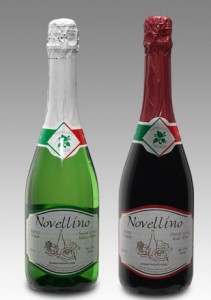Firm dares to make wine drinkers out of Filipinos
MANILA, Philippines—When Vicente Quimbo told family and friends that he wanted to get into the business of producing wine, most everybody thought he was crazy.
Quimbo could not really blame them for thinking that way considering that the wine drinking population in the Philippines is miniscule and grapes are almost non-existent.
And yet he persevered and put up Bel Mondo Italia Corp. because he was confident that Filipinos would embrace wine as their drink of choice.
Some 13 years later, people realize that he was not so crazy after all as his Novellino wines have become the best-selling wines in the Philippines and are now found in supermarket shelves in other countries, such as Vietnam.
Quimbo tells the Inquirer that he believed there was room in the market for wine because Filipinos do like wine, as it evokes images of romance, culture and sophistication.
But there was a huge gap between desire and actual consumption because, at that time, Filipinos believed that wine was beyond their reach or was too strong and bitter for their taste.
“So my question at that time was, what will make the Filipinos drink? They liked wine but they don’t drink it. It was like a beautiful woman that they admire but would not even try to talk to,” says Quimbo.
To address these concerns, Quimbo did three things through Bel Mondo.
First item of business was to formulate wine that will appeal to the Filipino palate that favors sweet over bitter.
This meant going for partial fermentation of the grape juice so that not all of the sugar content is dried out. Complete fermentation meant removing all of the sugar, thus making the wine “dry.”
“Partial fermentation was the innovation we introduced so that sugar will still be present in the wine,” Quimbo explains, adding that Bel Mondo had to invest in machinery and processes to keep the formulation sterile so that fermentation will be halted and the wine kept stable.
The second challenge was the price.
Quimbo says that most Filipinos are intimidated by wine because they automatically equate the drink with a high price.
This is why the basic Novellino wines—named after Novello, a wine-making town in the Piedmont region of Italy, are priced at around P200 a bottle.
The final hurdle was familiarity, and Bel Mondo met this challenge by investing in massive sampling activities in supermarkets, malls and bazaars combined with product advertising in all forms of media, particularly magazines.
“We had 30, 40, 50 sampling locations during our initial years. We had to make Filipinos more familiar with our wine, that wine did not have to be bitter. Until now, we still invest in educational campaigns because the number of wine drinkers in the Philippines remains small,” explains Quimbo.
But even if only about 1 percent of the 90 million Filipinos regularly consume wine, Quimbo says that the market has already quadrupled since Novellino burst into the scene, and the prospects for growth remain high, not just here but abroad.
“There is so much opportunity for growth, not just here but in other countries like Vietnam and the United Arab Emirates. That is why we are expanding both locally and globally,” says Quimbo.
To prepare for this growth, Bel Mondo is investing in a new wine-making facility at the Camelray Industrial Park, Laguna, to upgrade and expand the company’s wine production capability to between six and seven million bottles a year.
The 1.3-hectare winery will house Bel Mondo’s production, research and development and storage facilities. The state-of-the-art equipment will come from Italy, which is known for both its wine-making tradition and technological advancements in oenology. Overseeing the design is Franco Nosenzo, the company’s Italian winemaker and technical director.
“We have always been about quality and value. This is our commitment to our customers and consumers. This investment in a major winery is all about that,” says Quimbo.

